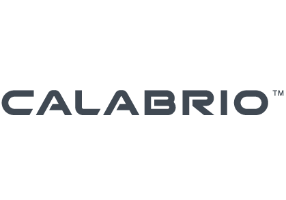
The second article explores why technologies that humanise experiences through the likes of AI-infused analytics and intelligent automation are the next step towards developing a robust well-being strategy. The third article looks at the more subtle elements of well-being as a means to promote personal and organisational growth.
The impact of the past few years has been wide-reaching and traumatic. Flexible working practices, growing customer demands and a fast-changing competitive landscape are all taking their toll. And these stressors are affecting everyone in the contact centre and beyond.
Let’s start with frontline staff
Stress levels among agents are rising sharply. 96% claim to feel stressed at least once a week, while 33% of agents are stressed multiple times a week – up from 25% in 2017. Is it any wonder, given that they are dealing with 14.4 additional omnichannel interactions per day? (Source: Calabrio) At the same time, many people are still adapting psychologically to an often disorienting ‘work from anywhere’ culture while faced with the practicalities of juggling home and work life.
Agent stress has a knock-on effect on supervisors and customer experience (CX)
A recent study revealed that 60% of respondents agreed that staff attrition and absence, while initially pandemic-related, is still causing CX issues.(Source: ContactBabel) [i] Just how do those running the show (aka the contact centre operations) juggle agent schedules and skills throughout the day while planning for future recruitment, coaching and training as cost-effectively as possible?
Contact centre leaders also need to understand the bigger picture. Why staff are leaving for the competition, or why customer churn rates are higher than usual. The pressure is on contact centre operations to manage agent stress while at the same time dealing with hybrid working and increased numbers of digital communication channels. Add to this the need to optimise performance, keep teams connected and meet ever-increasing customer expectations. It’s all created a perfect storm for anxiety and stress that threatens the wellbeing of employees and the long-term prosperity of their organisations. What can be done to reverse the trend?
Three ways to improve wellbeing
Wellbeing translates into:
- Agents who are empowered and taking control of their working lives and the customer experience
- Supervisors supporting the business with a motivated workforce that surpasses key metrics and service levels
- Executives who strike a fine balance between cost control, innovation and business expansion.
Take an all-round approach
Find out what is working and what isn’t – for your agents, supervisors and senior managers. Look beyond the contact centre and think about involving other parts of the organisation, including subject matter experts, to improve knowledge, boost contact centre performance and enhance wellbeing. What processes are in place to share best-practice CX learning so that all departments are encouraged to do better? Once these are in place, they can increase employees’ sense of well-being.
Make the most of data
With customer and employee loyalty in flux during the pandemic, companies need deep, relevant insights from inside and outside the organisation to help protect and grow customer relationships, while keeping staff from straying to the competition. All too often, however, valuable information gets trapped inside the contact centre. Essentially, many organisations are sitting on a goldmine of intelligence that isn’t used effectively. Are you being held back by data silos and/or clunky IT systems?
Follow the leaders
Success depends on gaining control over data using data-driven technologies. For example, Thomson Reuters wanted to understand how the introduction of remote agent onboarding and training, due to COVID-19, was affecting its business. The company identified calls with long and multiple hold times using the latest analytics. It then worked to establish why this was happening. The goal was to eliminate putting calls on hold. As a result of the analytics programme, the company enjoyed significant benefits with a wide-ranging impact on organisational wellbeing. For example, the Tax & Accounting Professionals Business Unit saved up to 3% of its contact centre’s annual operating budget. Meanwhile, average call times reduced by more than 90 seconds, call holds per call dropped one-and-a-half times and there was a 6.4% increase in customer satisfaction.
Removing stress improves wellbeing
Improving employee wellbeing depends on removing stress at all levels of the organisation. In our next article, discover how modern Workforce Engagement Management (WEM) solutions including AI-infused analytics are the answer to wellbeing. We will also look at how technology can be integral to enhancing staff engagement, optimising contact centre performance and boosting profitability. Head to the new “Workforce Wellbeing Recovery Kit” to gain hints and tips for three key stakeholders, with the main stressors to target, checklists to process change and tech buyer’s guides.
[i] “US Customer Experience Decision-Makers’ Guide 2021-2022” – published by ContactBabel


























